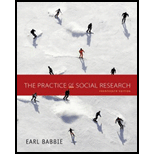
Introduction:
Deductive reasoning goes from the general to the specific. In this case we might predict that less educated people are more prejudiced. This would then be followed by a test of this hypothesis. Inductive reasoning goes from specific to general, and in this case one might evaluate data to see how education and prejudice are related, then suggest reasons why.
Explanation of Solution
Answer and explanation:
(This question requires a subjective response, this is an example.) The relationship between prejudice and education can be addressed from different perspectives. If we start with the hypothesis that less educated people are more prejudiced, then look for evidence to test it, we are using a deductive model. For example, after agreeing on what constitutes prejudice, one could track the education levels of people who are more prejudiced to see if they are lower, as predicted. If we wanted to use inductive methods instead, we would begin by analyzing data to see if education level is correlated to level of prejudice to determine the relationship, then look for reasons why this relationship exists.
Want to see more full solutions like this?
Chapter 2 Solutions
The Practice of Social Research (MindTap Course List)
- Would elections have more third-party success if we had ranked-choice voting nationwide?arrow_forwardHow do minor parties influence the U.S. electoral system?arrow_forwardeelancer X English task 1.pdf - Google Driv X kq_A8Yyhcg5Muq83vtY5jmlvjd6ITE/view + Open with Google Docs Task Requirements: Word Count: 300-400 Formatting Style: MLA (for more information click here) *** A minimum of 1 reliable source must be used! Any sources must be properly cited according to the formatting style assigned Many people disagree about the appropriate age to allow children and young adults to use social media. Write an essay that argues your viewpoint about the issue. Develop your claim with reasons and evidence, and form a rebuttal to argue against a counterclaim. Page 1 / 1 Q + 26°C Mcarrow_forward
- DCS cans certification exam answers micaharrow_forwardDescribe a business that has used backcasting or scenarios to assess a situation and then developed a strategy to achieve their goals? what are the obstacles they faced ?arrow_forwardWhy could Backcasting be considered the most useful futuring method? how does the use of modules and simulations relate to futuring? is this method effective?arrow_forward
- "Literature is able to challenge perceptions by capturing the voices of frequently silenced characters". In the light of this comment show how Alexander Masters is successful in promoting Stuart's voice in Stuart: Alfie backwards. Include any quotes which are relevant.arrow_forwardBased on the Practical Foresight GuideLinks to an external site.: select ONE of the futuring methods from the guide and apply it to the Partners in Care problem. PROBLEM to SOLVE from Partners in Care: Increase number of face-to-face/in-person volunteers! As a growing nonprofit, Partners in Care increased the number of virtual volunteers during the pandemic. However, they need more face-to-face (in person) volunteers to help with driving clients to appointments and handyman work. Along with these solutions, they would love to have creative ways to recruit young volunteers to support social media and communication needs. short-term (within the next 3 months) long-term (within the next 2 years)arrow_forwardIf you had to choose one futuring method, which one would be the most useful and why?arrow_forward
- Who was John Evander Couey was, what crimes he committed, and who the child was that he harmed. Please include referencesarrow_forwardHow have economic crises such as the Great Depression, the 2008–2009 recession, and the COVID-19 pandemic impacted families in both practical and emotional ways? How do these events continue to shape family life today? In what ways has the definition and structure of “family” evolved in the 21st century? How do these changes reflect broader shifts in societal values, gender roles, and legal recognition of diverse relationships? What are some of the major economic and social challenges facing families today, and how do these challenges differ across social class levels, particularly for working-class and middle-class families? How do you think the increasing visibility of same-sex families, domestic partnerships, and cohabitation without marriage will influence societal norms and policies around family in the coming decades? Given current trends, what do you envision family life will look like in the future—by 2030 or 2040? How might factors like technology, economic instability,…arrow_forwardWhat social, political, and legal advancements have supported women’s increased participation in the labor force and politics over the past century, and how have these changes shaped the current status of gender equality in the U.S.? How have men been affected by gender inequality, and in what ways can men's involvement in gender equity movements contribute to broader societal change? Despite progress, what are some of the major unresolved gender issues in the twenty-first century—particularly in the areas of labor, education, and health—and why do these issues persist? How does gender inequality affect not only individuals and families but also larger systems such as the economy, politics, and global stability? Can you provide examples of how addressing gender equity could lead to societal improvement? In what ways is gender inequality a global issue, and how are challenges like violence against women, immigration, and sex trafficking connected to broader patterns of gender-based…arrow_forward
 Social Psychology (10th Edition)SociologyISBN:9780134641287Author:Elliot Aronson, Timothy D. Wilson, Robin M. Akert, Samuel R. SommersPublisher:Pearson College Div
Social Psychology (10th Edition)SociologyISBN:9780134641287Author:Elliot Aronson, Timothy D. Wilson, Robin M. Akert, Samuel R. SommersPublisher:Pearson College Div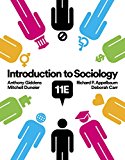 Introduction to Sociology (Eleventh Edition)SociologyISBN:9780393639407Author:Deborah Carr, Anthony Giddens, Mitchell Duneier, Richard P. AppelbaumPublisher:W. W. Norton & Company
Introduction to Sociology (Eleventh Edition)SociologyISBN:9780393639407Author:Deborah Carr, Anthony Giddens, Mitchell Duneier, Richard P. AppelbaumPublisher:W. W. Norton & Company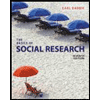 The Basics of Social Research (MindTap Course Lis...SociologyISBN:9781305503076Author:Earl R. BabbiePublisher:Cengage Learning
The Basics of Social Research (MindTap Course Lis...SociologyISBN:9781305503076Author:Earl R. BabbiePublisher:Cengage Learning Criminalistics: An Introduction to Forensic Scien...SociologyISBN:9780134477596Author:Saferstein, RichardPublisher:PEARSON
Criminalistics: An Introduction to Forensic Scien...SociologyISBN:9780134477596Author:Saferstein, RichardPublisher:PEARSON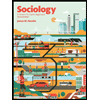 Sociology: A Down-to-Earth Approach (13th Edition)SociologyISBN:9780134205571Author:James M. HenslinPublisher:PEARSON
Sociology: A Down-to-Earth Approach (13th Edition)SociologyISBN:9780134205571Author:James M. HenslinPublisher:PEARSON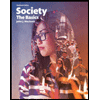 Society: The Basics (14th Edition)SociologyISBN:9780134206325Author:John J. MacionisPublisher:PEARSON
Society: The Basics (14th Edition)SociologyISBN:9780134206325Author:John J. MacionisPublisher:PEARSON





